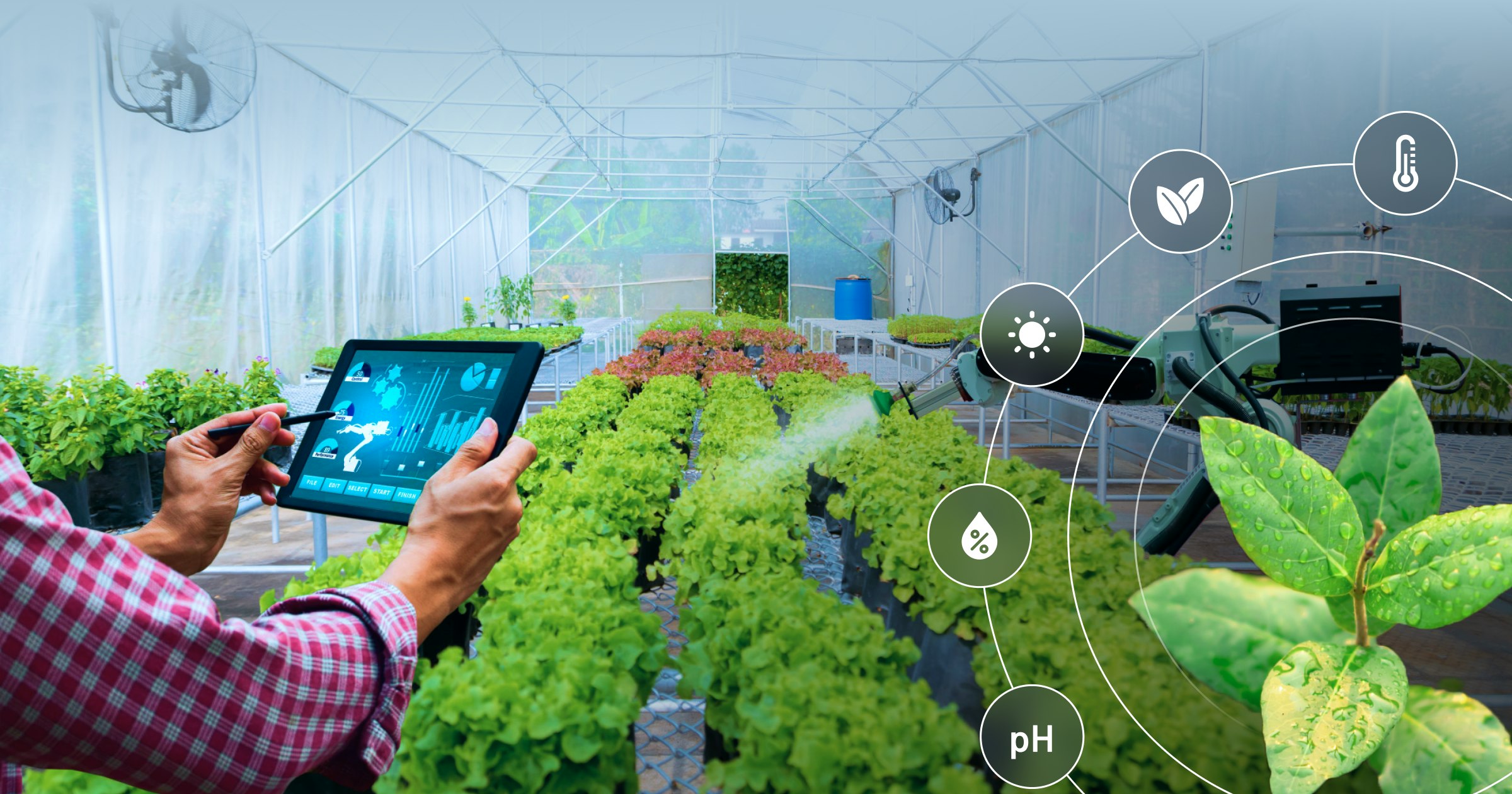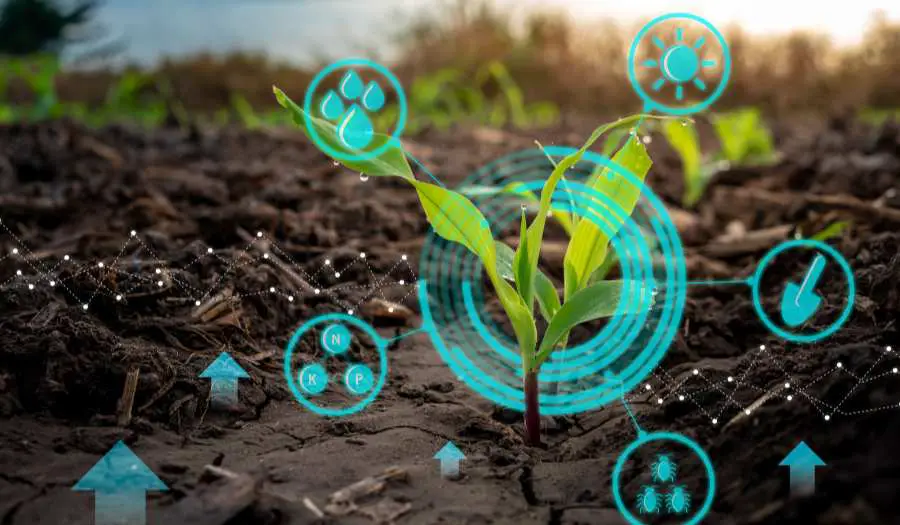Agriculture is undergoing a major transformation due to technological advances that are increasing productivity, efficiency, and sustainability. Smart agriculture, also known as precision farming, integrates the latest technology into farming practices to help farmers optimize their operations and make informed decisions. This article explores how technology is revolutionizing agriculture, the benefits of smart farming, and the challenges ahead.
1. understanding smart farming

Smart agriculture refers to the use of technology and data analytics to improve agricultural practices. By utilizing a variety of technologies, farmers can more effectively monitor and manage their crops and livestock, leading to improved yields and resource management.
1.1. Key Smart Agriculture Technologies
Internet of Things (IoT): IoT devices such as sensors and drones collect data from fields and livestock to provide real-time information on soil moisture, temperature, crop health, and other conditions.
Big data and analytics: Data analytics platforms process vast amounts of agricultural data to enable farmers to make data-driven decisions.
Artificial Intelligence (AI): AI algorithms analyze data, predict results, and suggest optimal farming practices to increase efficiency and productivity.
Drones and aerial imagery: Drones take high-resolution images of fields, allowing farmers to monitor crop health, assess damage, and optimize resource use.
2. transformation of agriculture through technology

2.1. precision agriculture
Precision agriculture focuses on managing field variability to optimize crop production and minimize waste. by leveraging data from IoT sensors and satellite imagery, farmers can
Monitor soil health: sensors provide real-time data on soil moisture and nutrient levels, allowing farmers to apply fertilizer and water more efficiently.
2.1. planting optimization: data analysis determines optimal planting times and methods to ensure optimal crop yields
2.2. automated farm machinery
The use of automated machinery and robotics is transforming agricultural practices: tractors and harvesters equipped with GPS technology can operate autonomously, reducing labor costs and increasing efficiency.
Robotic harvesters: These machines can harvest fruits and vegetables at optimal ripeness, minimizing waste and ensuring quality.
Automatic irrigation systems: Smart irrigation systems use sensors to monitor soil moisture levels and automatically adjust water deliveries according to crop needs.
2.3. livestock management
Technology is also improving livestock management practices, leading to improved animal health and more efficient management.
Wearable technology: sensors and wearables track animal health and behavior, allowing farmers to monitor vital signs and detect disease early.
Data-driven nutrition: AI algorithms analyze livestock data to optimize feeding methods, improve animal health, and reduce feed costs.
3. benefits of smart agriculture

The integration of technology into agriculture offers many benefits to farmers, consumers, and the environment:
3.1. increased efficiency and productivity
Smart agriculture technologies can help farmers optimize resource use, increase crop yields, and reduce costs. By accurately applying inputs such as water and fertilizer, farmers can maximize productivity while minimizing waste.
3.2. sustainability
Smart agriculture contributes to more sustainable farming. By using resources more efficiently, farmers can reduce environmental impacts, conserve water, and minimize chemical runoff.
3.3. improved decision-making
With access to real-time data and analysis, farmers can make informed decisions. With a better understanding of the field, farmers can respond quickly to changing conditions and reduce risks associated with weather and pests.
3.4. improved crop quality
Smart agriculture technology will allow farmers to closely monitor crop health and produce higher quality produce. Through precise management, farmers can grow healthier crops and reduce the potential for disease.
4. challenges facing smart agriculture
Despite its many advantages, smart agriculture also faces several challenges:
4.1. high initial investment
The implementation of smart farming technologies often requires a large initial investment. Many smallholder farmers may struggle to afford the necessary equipment and software.
4.2. data privacy and security
As agriculture becomes increasingly data-driven, concerns about data privacy and security are growing. Farmers must ensure that data is protected from breaches and unauthorized access.
4.3. complexity of technology
Integrating advanced technologies is complex and requires farmers to acquire new skills and knowledge. Training and education are essential for successful implementation.
4.4. connectivity issues
Limited Internet connectivity in rural areas may hinder the adoption of smart agricultural technologies. Reliable Internet access is essential for real-time data collection and analysis.
5. the future of smart agriculture
As technology advances, the future of smart agriculture is promising. Several trends are expected to shape the agricultural landscape in the coming years:
5.1. continued technological innovation
The development of new technologies such as advanced sensors, AI algorithms, and robotics will bring further innovation to smart farming practices.
5.2. sustainable practices
As consumer demand for sustainable products increases, smart agriculture will increasingly focus on environmentally friendly practices that promote sustainability and resource conservation.
5.3. collaboration and data sharing
The future of agriculture will involve increased collaboration among farmers, high-tech companies, and researchers. Sharing data and best practices will increase the effectiveness of smart agricultural technologies.
5.4. regulatory support
Governments and organizations play an important role in supporting smart agriculture initiatives through policy development, funding, and educational programs.
Conclusion.
Smart agriculture is a paradigm shift in agriculture due to technological advances that increase productivity, sustainability, and efficiency; by leveraging IoT, AI, big data, and automation, farmers can optimize their operations and make informed decisions to meet growing consumer demand.
While challenges remain, the potential benefits of smart agriculture are significant and point the way to a more sustainable and productive agricultural sector. Going forward, the adoption of technology and innovation will be essential to address food production challenges and ensure a sustainable future for agriculture. The future of agriculture is bright and smart agriculture will play a pivotal role in shaping it.










